- How Much Weight Can You Realistically Lose in 3 Months? - January 14, 2024
- How To Lose 1kg a Week (Guaranteed) - August 20, 2023
- How To Count Calories (or Estimate) and Stay on Track When Eating Out at Restaurants - July 25, 2023
Another day, another fad diet.
But is OMAD really a fad or could it genuinely help you lose weight more quickly, and in a more sustainable way than other diets you tried before? Very possibly. Let’s take a closer look.
WHAT IS THE OMAD DIET?
OMAD stands for One Meal A Day and it does pretty much what it says on the tin, you eat one meal a day which will allegedly help you lose weight and get in great shape.
OMAD isn’t an official ‘product’ like some other diets, and I don’t who it originated or who coined the term, but as you can see from Google Trends that it started getting popular around late 2017 and has really been peaking since April 2020 (which was, for many countries the peak of the covid pandemic – maybe it’s related, maybe not).
The reason for it’s recent popularity could be that, since people are forced to stay indoors, they have much more control over their day, and so are able to conveniently get by on one meal. It may also mean that they have more time to cook and eat, because believe me, it definitely takes more time to prepare, cook and eat ALL your food in one sitting.
WHY IS OMAD POPULAR?
But why is it popular outside of the context of the pandemic?
The beauty of OMAD is its simplicity while other diets have you eating heavily prescription meals at specific times of the day OMAD simply says; eat once a day, within a 1 hour window.
This may help people lose weight because;
- There’s a limit to how much food you can physically eat in one sitting, even if you’re REALLY hungry
- There’s also a limit to how much you can eat within an hour – an OMAD sized meal will of course take a LONG time to get through, and once your one hour window is up, that’s it, you can’t eat any more (so long as you stick to the rules)
It’s this level of simplicity that makes OMAD so easy to follow and therefore easy to adhere to, and adherence is the prerequisite for any diet to work – if you don’t stick to it, you won’t get any results
Some popular diet methodologies that people may find hard to follow include;
- Diets limited to one food (e.g. Cabbage Soup Diet)
- Diets that require eating at certain times (e.g, Intermittent Fasting)
- Diets that require people to track calories (e.g. IIFYM)
- Diets that completely ban a certain food group (e.g. Keto)
OMAD circumnavigates all of these issues – you can eat whatever you want (within reason), you can eat whenever you want, you don’t need to track calories (because it’s going to be quite difficult to eat a number of calories that would put you in a calorie surplus in one sitting), and no one food is off-limits.
Here’s what 2000 calories looks like if you were to eat that amount over the course of a day;
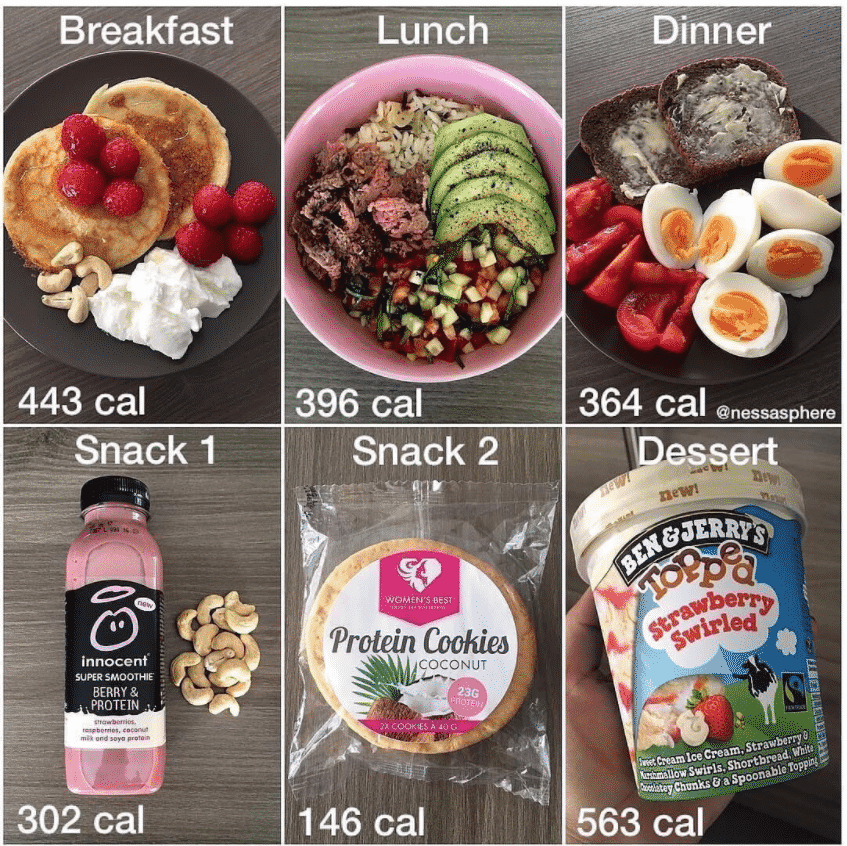
Remember, if you’re actually doing OMAD, all this needs to eaten in one go!
THE OMAD DIET FOR WEIGHT LOSS
As with any other diet, in order to lose weight, you WILL need to be in a calorie deficit, and if you’re not losing weight, that’s nothing to do with OMAD, or anything else other than that you’re eating too many calories.
Like any diet, OMAD is a tool for achieving a calorie deficit; so you need to ask yourself if OMAD is the right tool to allow YOU to achieve a deficit.
A study carried out on a group of 40-50-year-old men and women in 2007 found that human subjects on OMAD
would have eaten less than those on 3 meals/day if we had not asked them to consume the same amount of food that they normally eat on a 3 meal/d schedule
Carlson et al, 2007
Additionally, rats were found to eat 10-30% fewer calories on an intermittent day fasting diet than when eating ad-libitum.
This suggests that switching to an OMAD-style diet may lead people to subconsciously reduce calories if their eating window is limited. This makes sense because it removes the ability to snack throughout the day.
But does OMAD offer any other benefits, aside from making it easy to intuitively reduce calories?
This study carried out on 40-50-year-old men and women split subjects into two groups; one was given a standard 3 meal per-day plan, and the other was given one, which they were permitted to eat in a 4-hour window.
The two eating methods were isocaloric, i.e. the calories were the same. Macronutrient profiles were also the same. Unsurprisingly, given the isocaloric conditions, the majority of the subjects maintained their weight, but the study did find that
“When meal frequency is decreased without a reduction in overall calorie intake, modest changes occur in body composition, some cardiovascular disease risk factors, and hematologic variables”Sote et al, 2007
The changes in body composition were positive ones; people following the 1 meal per day plan ended up with less bodyfat. Given that macronutrients were matched between the two groups, this could have been the result of unreported resistance training.
WHAT TO DO IF YOU’RE NOT LOSING WEIGHT ON OMAD
If you’re currently doing OMAD for weight loss but not seeing results, the reason is almost certainly that you’re simply eating too many calories.
Regardless of whether or not you stick with OMAD, the likelihood is that you will need to bring down calories – OMAD may limit your eating window, but it isn’t magic; if you’re consuming more calories than you expend on a daily basis, you’ll gain weight, OMAD or not.
IS OMAD SIMILAR TO INTERMITTENT FASTING?
Yes. Very similar Intermittent fasting protocols dictate an approach that means only eating within certain time windows during a 24 hour period. OMAD suggests only having a ONE hour eating window every 24 hours meaning it’s effectively an even more aggressive form of fasting – condensing all calories into a very short period of time. You could argue that intermittent fasting and OMAD were essentially the same thing.
WHO IT WORKS FOR AND WHO IT DOESN’T
In my experience, OMAD works well for these types of people;
Busy people that are out of the house for long periods – if you’re trying to lose weight it’s much easier if you have direct control of what you’re eating, and if you’re out of the house all day working, the temptation is to grab something quick from a supermarket for lunch. Even with the best of intentions, it’s easy to pick something that’s deceptively high in calories – for example some of the supermarket salad bars have pasta options that are laden with fat (and therefore lots of calories).
If you find that lack of control frustrating, switching to an OMAD approach means you can get home and prepare your only big meal of the day using only ingredients you’ve chosen, meaning you have direct control over exactly what you’re eating.
People That Aren’t That Hungry in the Morning – if you don’t get hungry first thing in the morning, breakfast is an easy meal to skip. That means you don’t have to get over the ‘hurdle’ of not eating first thing, because you probably don’t do it anyway. This means you’ve only really got to focus on getting through the middle part of the day, knowing that you’ve got a huge meal to come home to.
Of course if you love eating breakfast, you can still do OMAD, it just means that your only meal of the day will be breakfast. A big breakfast will likely take a bit of prep so if you have a 9-5 then you’ll need to make sure you leave yourself enough time in the morning to prep and eat.
People That Enjoy Slow Cooker/One Pot Meals – An easy way to prep a lot of tasty food without too much effort is to use a slow cooker. Using a slow cooker, you can throw in a bunch of ingredients of a stew or a chilli (for example) in the morning, and by the evening it’ll all be ready for you to scoff when you walk in the door.
People with Sedentary Office Jobs – You don’t burn many calories sitting in a chair all day, so your requirement for food will be much lower than someone that’s on their feet all day. This means that while you might get hungry during the day, it’s not like you NEED the calories to actually do your job.
OMAD DIET PROS AND CONS
Pros
It’s Simple
As mentioned above, the beauty of OMAD is its simplicity – just eat one meal a day, this works for so many people because eating enough calories to put you in a calorie surplus is tricky in one sitting.
It’s Fun
Who doesn’t like eating a ton of food? Especially when you’re starving. OMAD allows to experience a form of ‘controlled gluttony’ which means you don’t feel like you’re being limited or restricted – it’s just that you can only do it once a day!
Cons
It May Not Be Great For Building Muscle
If you want to build the maximum amount of muscle possible, OMAD might not be the best nutrition methodology for you. Why? Because you have more chance of more muscle if you stimulate Muscle-Protein-Synthesis several times per day. It takes around 2g of leucine, or 20g of animal protein to stimulate MPS, which is why eating 3-5 meals, each with a decent slug of protein is a good idea if muscle-building is your ultimate goal.
Of course, the ultimate determining factor in muscle gain is a sufficient amount of training volume (which increases over time) and adequate protein intake, if you can still achieve these two prerequisites using OMAD, then don’t let the slightly suboptimal frequency of protein feedings get in your way. This study showed that the impact of meal frequency on Fat-Free Mass (muscle mass was insignificant – however, a frequency of one meal per day wasn’t part of the study.
You’ll need to Try and Get All Your Nutrients in One Go
Regardless of whether you’re trying to build muscle or lose weight, it’s a very good idea to ensure you’re getting the widest possible range of macro (protein, carbs, fat) and micro (vitamins, minerals). If you eat the ‘normal’ 3-5 meals per day, it’s quite easy to do that because you can have some fruit for breakfast (e.g. berries and yogurt), then some veg and lean meat for dinner – with OMAD you’ll need to try and get this all in one sitting which could mean some unusual and creative food combos (and no, I’m talking Pineapple on Pizza).
It Involves a Lot of Prep and Cooking Time
Eating a lot of food in one go means a lot of prep and cooking in one go. I mentioned before that OMAD might be good for people that are out the house all day. The issue with that is, when you do get in you may well end up spending all your spare time cooking and eating.
Gut Issues
If your target calorie intake is high, doing OMAD could mean eating a LOT of food volume in one go. This can could be uncomfortable for a lot of people, but particularly for those who’ve had a gastric band or any other type of bariatric surgery
It’s Anti Social
Not many people eat one meal a day because it’s simply not ingrained in Western culture. The ‘norm’ is to eat three square meals a day, plus a few snacks. If your partner/family are eating three times a day and you’re having one huge meal once a day, is that going to cause any issues?
Is OMAD For You?
As with any diet, OMAD has its pros and cons, and it’ll only work for you if a) it means you’re in a calorie deficit, and b) you can adhere to it long term. Consider if it fits your lifestyle first, rather than trying to crowbar it in.
ARE THERE ANY OTHER BENEFITS TO OMAD?
Most people that do OMAD will do to lose weight.
But are there other benefits to long-term fasting (in this case, a 24:1 pattern) than just weight loss?
This 2006 study compared the insulin sensitivity of a group of men with metabolic disorder before and after fasting for Ramadan.
The study found that there was an improvement in both insulin sensitivity and blood pressure after the fasting period, as well as the subjects weight and waist circumference coming down.
Another study carried out in 2017 looked at the effects of a 2 week intermittent fasting period (which OMAD is essentially a version of) on people with type 2 diabetes.
Ten people took part in the study and on average, lost 1.3kg during the 2 week fasting period, as well as lowering morning blood glucose levels fasting.
While both these studies show beneficial effects on blood pressure and blood glucose; it’s important to remember that it’s likely to be the weight loss that caused these beneficial effects, not simply the fact that participants were intermittent fasting.
OMAD DIET MEAL IDEAS
I know what you’re thinking, how on earth do you eat an entire days worth of calories in one sitting?
You’d probably be surprised how easy it actually is. For these examples, we’re going to assume your daily calorie target is 2,500. We’re going to aim for around 150g of protein – carbs and fat can sort themselves out.
N.B. I’ve included Whey in most of these examples as we need to boost the protein, and protein powder is a an easy, cheap way to do it.
N.B 2. These meals are probably not sufficient in terms of fruit and veg – given that veg is super low calorie you may want to think about following up your OMAD meal with a blended green shake with all the usual dark, leafy suspects (Broccoli, Kale, Spinach, etc).
Eating Out
A cheeky Nandos is pretty much the go-to for someone who wants dinner out that’s enough of a treat while still being relatively high in protein and low in calories. Here’s what I’ve gone for;

One Pot
If you want to keep the OMAD meal prep to a minimum, one-pot meals (meals where you throw everything in at the time time and let it cook) are going to be your friend. I’ve gone for a Chilli with all the trimmings. No doubt someone will tell me it’s missing a vital ingredient (if you think that ingredient is Ketchup, please leave and never come back).
Lazy Option
If you’re super skint or just feeling lazy, you can create an OMAD meal with essentially zero prep time. Granola, milk and protein powder ticks all the boxes without being particularly exciting.
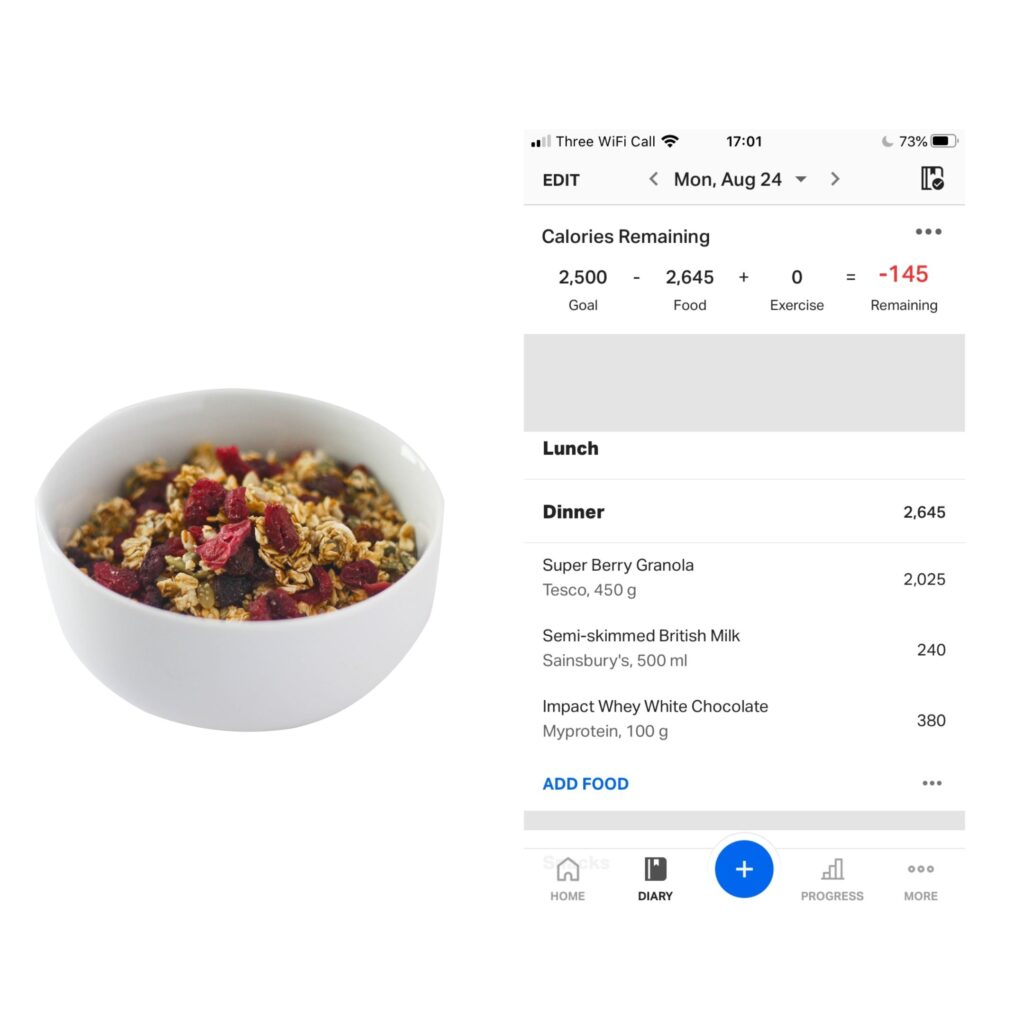
SUMMARY
So is OMAD a good diet for fat loss? If you’re really busy, only really have time to eat once a day, and enjoy eating one a day, the go for it.
For most people though, the standard 3-5 meals approach is perfectly sufficient and I’d argue better than OMAD for fat loss.
In my experience, eating a huge amount in one sitting is a chore, and being hungry all day is also a chore, so I don’t see any reason to put yourself through what is actually quite an aggressive fast.
REFERENCES
Impact of Reduced Meal Frequency Without Caloric Restriction on Glucose Regulation in Healthy, Normal Weight Middle-Aged Men and Women: https://www.ncbi.nlm.nih.gov/pmc/articles/PMC2121099/
A controlled trial of reduced meal frequency without caloric restriction in healthy, normal-weight, middle-aged adults: https://www.ncbi.nlm.nih.gov/pmc/articles/PMC2645638/
Effects of meal frequency on weight loss and body composition: a meta-analysis: https://academic.oup.com/nutritionreviews/article/73/2/69/1820875
Effect of Ramadan fasting on some indices of insulin resistance and components of the metabolic syndrome in healthy male adults: https://www.cambridge.org/core/journals/british-journal-of-nutrition/article/effect-of-ramadan-fasting-on-some-indices-of-insulin-resistance-and-components-of-the-metabolic-syndrome-in-healthy-male-adults/262D856B92256F11C2F0A41884B103C5
Effects of intermittent fasting on health markers in those with type 2 diabetes: A pilot study: https://www.ncbi.nlm.nih.gov/pmc/articles/PMC5394735/
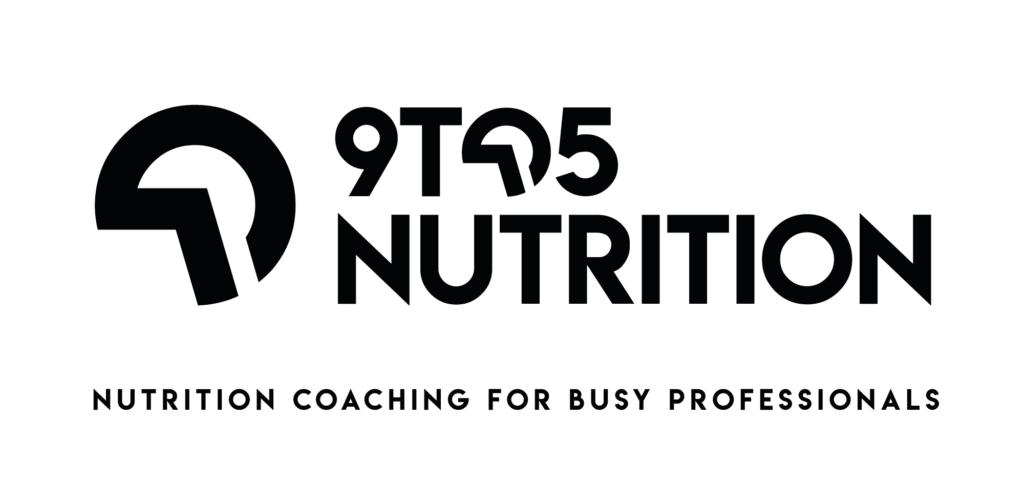
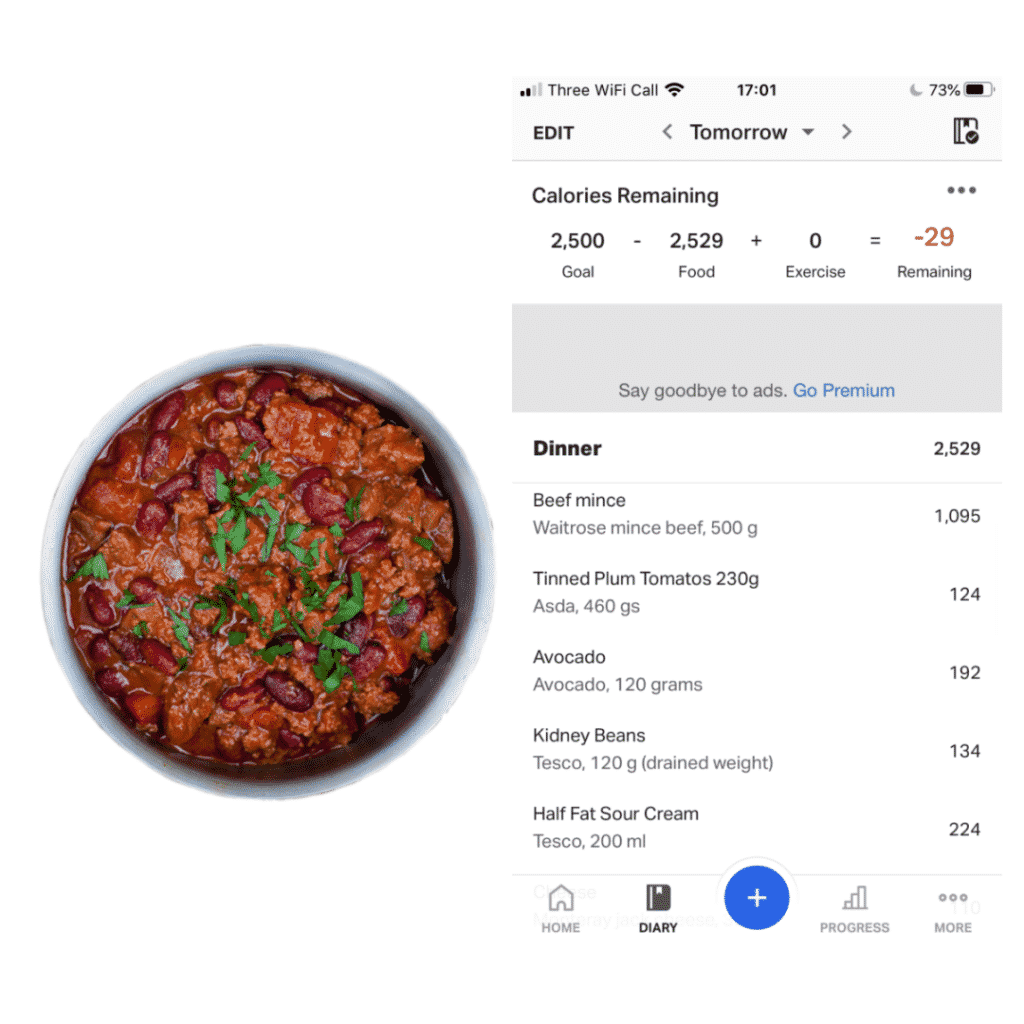
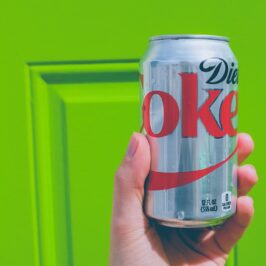
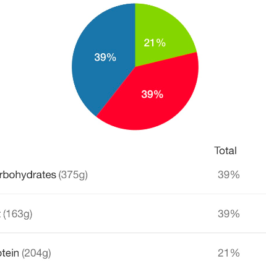
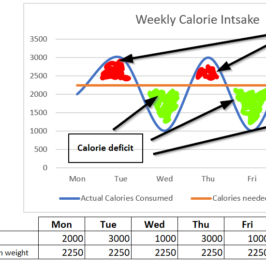

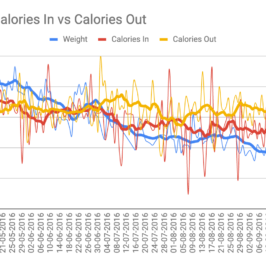
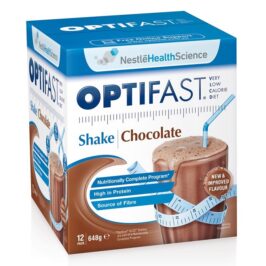
Leave a Reply